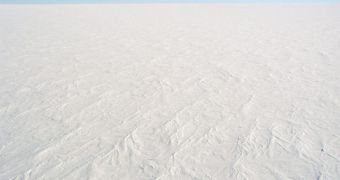Over the past couple of years, experts have successfully used an innovative, new imaging technique called L.I.F.E. to probe the Antarctic underground for signs of life. Their quests have been successful, and the new technology has been proven to function very accurately. Now, taking that research one step further, scientists say that it could have considerable implications in our search for life on other planets, and especially on Mars. The planet's ice sheets look like they could harbor microbes and bacteria, so using the new method there may yield some breakthrough results, ScienceDaily reports.
The method has discovered life, for example, in underground, Antarctic, frozen lakes, where cyanobacteria have been active. The Laser-Induced Fluorescence Emission (L.I.F.E.) imaging technique has been able to pick up these signs of activity, by detecting the red and infrared fluorescence the microorganisms generate while being alive. The work has been conducted by Kinohi Institute expert Michael Storrie-Lombardi, PhD, in the United States, and research scientist Birgit Sattler, PhD, from the University of Innsbruck, in Austria. The main advantage the imaging technique has is that it is non-invasive.
That is to say, it does not destroy the target organisms while investigating them, unlike other similar detection methods. The surrounding ice matrix is also kept intact, as is the overall shape and size of the microbial colony, the team reports. The expedition in which the method was used saw scientists traveling to Schirmacher Oasis and Lake Untersee, in Dronning Maud Land, Antarctica, as part of the 2008 Tawani International Expedition.
The new method is extremely cheap to implement, and mostly uses off-the-shelf parts. It can be easily adapted and enhanced, so that it is retrofitted on a future orbiter destined for Mars. It can also conduct its measurements from the atmosphere. In other plans, a L.I.F.E. System could also be introduced to a rover, which could drive specifically to areas of interest, and conduct in-situ measurements of the underground activity. This feasible and promising, life-detection strategy could prove to be of tremendous use, as more advanced machinery is sent to other planets to conduct exploration.

 14 DAY TRIAL //
14 DAY TRIAL //